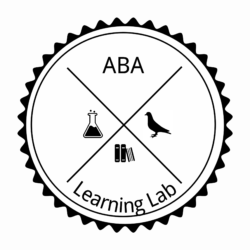James Macon, M.Ed., BCBA
I love finding examples of behavior analysis in popular culture. Unfortunately, that sometimes means looking at fake, ugly or even perverse applications of our science. That is to say, we are often portrayed as villains. I find this observation really amusing, as Behavior Analysts are usually nerdy do-gooders, disproportionately women (not that women can’t be villains), and usually work with children with special needs. In other words, not your classic villain. Nonetheless, here are some examples I’ve found.
If you haven’t seen “A Clockwork Orange” before, the story (spoiler alert) centers around a violent young man named Alex. Alex is sent to prison, but is offered an experimental behavior modification procedure that would grant him early release.
The procedures were unabashedly unethical. Alex would receive shots of “vitamins” that would induce nausea and sickness. The experimenters then played movies of rape and violence. As Alex watched the films, which under normal circumstances would elicit a response of violence, now became a conditioned aversive stimulus thanks to the shots of “vitamins,” and Alex would become paralyzed with sickness. In the future, when he would see violence, he would again become ill thanks to this classical conditioning procedure. Ultimately, Alex’s “therapy” was undone by respondent extinction. The husband of one of his former rape victim found him and played classical music to torment him, but did it to the point where it no longer produced a paralyzing sickness.
Before Conditioning
|
Respondent Conditioning Behavior Modification “Treatment”
(more trials)
|
Product of Respondent Conditioning
|
Another personal favorite of mine is the Bourne Identify franchise. Jason Bourne, the films protagonist, is the product of a clandestine government training program that uses behavior modification to train elite covert assassins. He is a weaponized, lethal killing machine, but suffers from amnesia, and can’t remember who he is. The government attempts to ‘neutralize’ him but Jason’s training kicks in. He is surprised to learn that he is an expert in nearly all things hand-to-hand combat and survival, and repeatedly thwarts the governments efforts to kill him. Eventually he is able to piece together who he is, and who turned him into a lethal killing machine, leading him to the CIA and behavior modification program called “Operation Treadstone.”
In the film, Dr. Albert Hirsch is the behavior analyst who designed the Treadstone program. It uses harsh punishment, deprivation, and negative reinforcement procedures to evoke compliance with training goals (i.e., assassinating people) and to reshape the personality of their recruits. Ultimately, Dr. Hirsch gets what’s coming to him, and Jason is able to more and more closely approximate a normal life.
Establishing Operation: Sleep Deprivation
| Before | Behavior | After |
| Will continue to suffer torture | Comply with trainers’ request to …R1 through R5 (e.g., assassinate someone) | Will not suffer torture |
I recently finished watching Hulu’s “The Hand Maiden,” a show about a post-utopian society where the majority of the world’s women are infertile. The few women who are capable of having children are enslaved (and even traded) as a commodity. While the show was entertaining, it was the realism portrayed that made it so gripping. But what does this have to do with behavior analysis? The villains of the show used tons of behavior modification procedures to keep people “compliant.” First, the show made use of a “re-education” procedure where positive punishment and negative reinforcement contingencies shaped new responses for the shows characters. In addition, positive punishment contingencies were in place for any behavior that deviated from pre-established rules and norms. The show also had interdependent group contingencies in place, although instead of being reinforcement based, (you guessed it), they were punishment based.
One example I could find a of a hero Behavior Analyst in T.V. was from 5 years ago, in “American Horror Story: Asylum,” and it involves a significant plot twist that will negate parts of this sentence. That season centered around Briarcliff, a brutish and cruel asylum for the criminally insane circa the 1960’s. Unfortunately for the patients there, the label “criminally insane” was often given arbitrarily by a broken medical and judicial system. The series protagonist, for example, was there only because she was a homosexual, which at the time was deemed a crime and sickness to be “cured.”
Patients were routinely subjected to horrible and ghastly “treatments” to cure their mental health/behavioral issues. A newly appointed psychiatrist to the asylum, Dr. Oliver Thredson, was appalled at the conditions and therapies offered, and pleads for a more ethical paradigm. He rails against the use of electroshock therapy as a “cure-all,” and begs the hospital to use more humane behavior modification procedures, which he says are now becoming the norm (go behavior analysis!). In the end, as part of a grand-plot twist (spoiler alert), our friendly Behavior Analyst hero Dr. Thredson ends up being a serial killer monster responsible for the dismemberment and death of countless victims.
While it’s always fun to see society’s take our profession, my hope is to one day see us portrayed outside the role of cruel, master villain. While I’m not exactly sure why we are always portrayed as the bad guys, I believe part of this is a legacy issue from our early days as a field, when we publicly discussed the topic of “free-will,” and determinism, and our words were taken out of context. Behavior analysis is an empowering and optimistic science, and being able to help people when and where no one else can is plenty of reward for me. Nonetheless, I’m still holding out for a hero role someday.


Why are the childern who bite, kick, punch etc. ever seen as the bad guys? Having a disability does not give you the right to hurt people without consequence. aba techs should be seen as matryrs not villians.